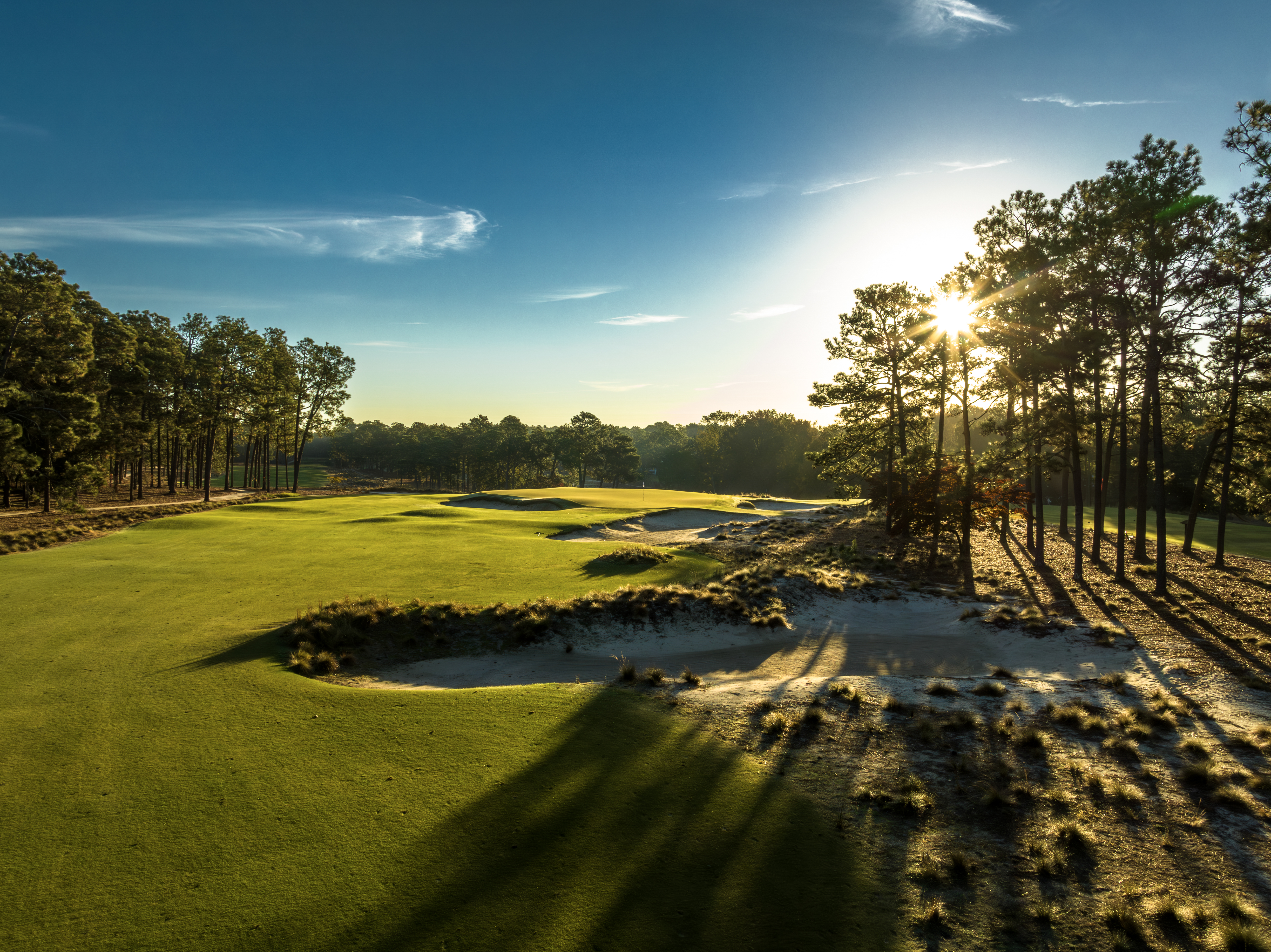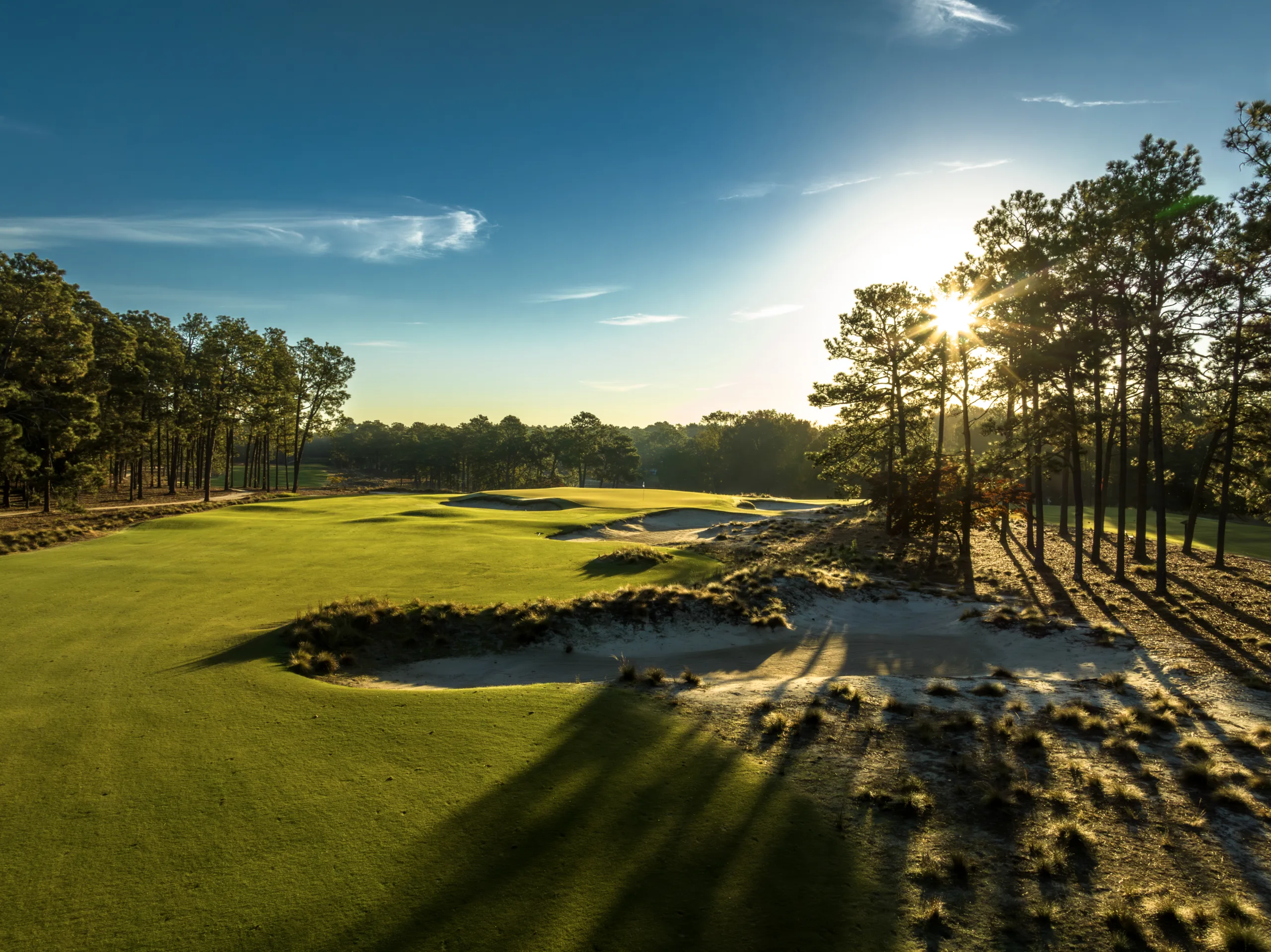There are several shots to be played at Pinehurst No. 2 that stand out as a challenge for even the best players in the game, mentally as well as physically. How hard do they want to push to make a birdie? How much risk to take on? How much will they gamble?
It’s not just about difficulty – it’s about managing expectations on the layout created by Donald Ross and most recently restored by Bill Coore and Ben Crenshaw. These decisions can make or a break a contender’s chances in this week’s U.S. Open at what likely will be a fast, firm and bouncy U.S. Open where wiregrass plants and sandy waste areas straddle so many of No. 2’s fairways.
We’re not talking “Can they hit No. 18 green under pressure?” types of questions here. Following are three key holes that, at first glance and because of their placement in a round, might not seem that important. All the same, we can’t wait to see how the pros tackle these holes that offer a great variation in possible outcomes.
No. 3: 387 yards, par 4

Hole No. 3 at Pinehurst No. 2 in North Carolina (Copyright USGA/John Mummert)
There are many ways to play one of the shortest par 4s at Pinehurst No. 2. An iron off the tee for placement, a fairway wood to set up a shorter wedge approach, maybe a bold driver at the green? Players expect a reasonable birdie opportunity – No. 3 was one of only three holes on the course to average under par in the 2014 Open – but there are myriad ways to suffer here.
The dogleg-right hole features multiple fairway bunkers, the most predominant of them jutting out of the sandy waste on the right, perfectly placed to interfere with a safe shot off the tee. The sandy scrub on either side is nasty.
U.S. OPEN: Tournament hub | Hole-by-hole | Odds, picks | How to watch
Many competitors will play short of that bunker, setting up a likely wedge into the green. That’s simple enough. Some players might try to sneak it a past that bunker with a fairway wood, leaving an even shorter approach but inviting trouble as the fairway turns to the right just beyond the trap.
The boldest and longest players might swing away with driver, especially as the likely firm conditions will allow a perfectly struck ball to possibly go the distance and bounce onto the green. There are greenside bunkers flanking the approach, but they aren’t the worst places to be off the tee, offering a still-reasonable chance for birdie, especially when the hole is cut toward the front of the green. But…
..
Click Here to Read the Full Original Article at Golfweek…
